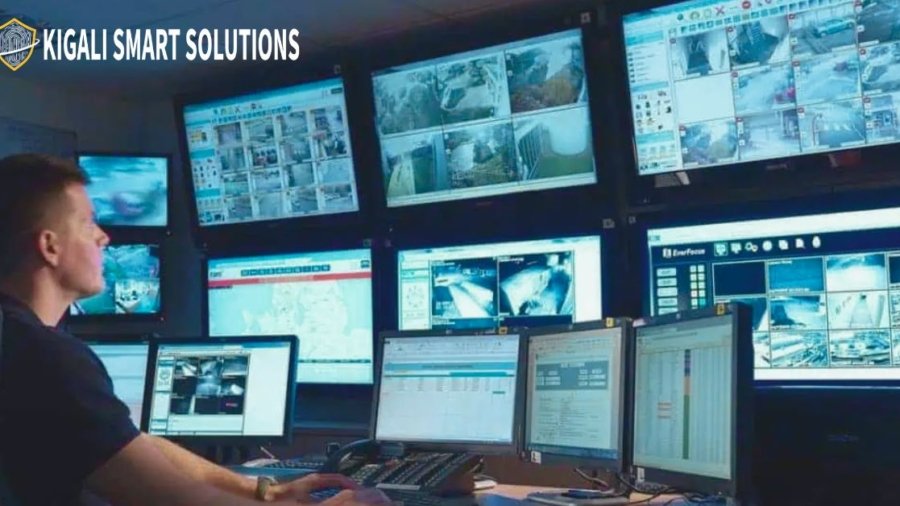In today’s digital age, the demand for heightened security measures is ever-present. Remote monitoring with CCTV cameras stands at the forefront of modern surveillance solutions, offering unparalleled vigilance and peace of mind. Let’s delve deeper into the intricacies of remote monitoring with CCTV cameras, exploring its functionalities, advantages, diverse applications, and practical implementation strategies.
Understanding Remote Monitoring with CCTV Cameras
Remote monitoring with CCTV cameras empowers users to oversee their premises in real-time from virtually anywhere with an internet connection. This capability revolutionizes surveillance, transcending the limitations of traditional monitoring systems and providing unprecedented accessibility and convenience.
Benefits of Remote Monitoring
- Enhanced Surveillance Coverage: With remote monitoring, the scope of surveillance extends beyond physical boundaries. Users can monitor multiple locations simultaneously, ensuring comprehensive coverage and heightened security awareness.
- Immediate Response to Security Threats: Real-time monitoring facilitates prompt response to security breaches and suspicious activities. Users can swiftly assess situations, alert authorities if necessary, and take preventive measures to mitigate risks and minimize potential losses.
- Flexible Monitoring Options: Remote monitoring accommodates various viewing devices, including smartphones, tablets, laptops, and desktop computers. This flexibility enables users to monitor their premises conveniently, whether they’re at home, in the office, or on the go.
- Efficient Resource Allocation: By optimizing surveillance resources, remote monitoring enhances operational efficiency and resource allocation. Users can allocate personnel and resources based on real-time insights and prioritize areas requiring immediate attention or intervention.
- Scalability and Adaptability: Remote monitoring solutions are highly scalable, allowing users to expand their surveillance capabilities as needed. Whether monitoring a small residence or a large commercial complex, remote monitoring systems can adapt to evolving security requirements seamlessly.
Applications of Remote Monitoring
- Residential Security: Remote monitoring safeguards homes and residential properties against intruders, burglaries, and other security threats. Homeowners can monitor entry points, perimeters, and interior spaces remotely, ensuring the safety of their families and belongings.
- Commercial Surveillance: In commercial settings, remote monitoring enhances security, loss prevention, and operational efficiency. Businesses can monitor retail spaces, warehouses, office premises, and parking lots remotely, deterring theft, vandalism, and unauthorized access.
- Public Safety and Infrastructure Monitoring: Remote monitoring contributes to public safety by monitoring public spaces, transportation hubs, critical infrastructure, and government facilities. Authorities can monitor crowds, traffic flow, and potential security incidents in real-time, enabling timely intervention and emergency response.
- Construction Site Security: Construction sites are vulnerable to theft, vandalism, and safety hazards. Remote monitoring with CCTV cameras enables construction managers to monitor site activities, equipment usage, and worker safety remotely, ensuring compliance with safety regulations and minimizing security risks.
- Educational Institutions: Remote monitoring enhances security in educational institutions, including schools, colleges, and universities. Administrators can monitor campus facilities, entrances, and common areas remotely, ensuring the safety of students, faculty, and staff.
Implementing Remote Monitoring
- Strategic Camera Placement: Install CCTV cameras strategically to maximize coverage and visibility. Identify critical areas for surveillance, such as entry points, high-traffic areas, and valuable assets, and position cameras accordingly for optimal monitoring.
- Network Configuration and Security: Configure the network infrastructure to support remote monitoring, ensuring adequate bandwidth and network stability. Implement robust security measures, including encryption, firewall protection, and multi-factor authentication, to safeguard against unauthorized access and cyber threats.
- Remote Access Setup: Configure CCTV cameras and recording devices to enable remote access via secure authentication protocols. Implement remote viewing software or mobile apps that allow users to access live feeds and recorded footage from any location with an internet connection.
- Customized Alerting and Notifications: Configure motion detection settings and alert notifications to notify users of suspicious activities or security breaches. Customize alerting parameters, such as sensitivity levels, detection zones, and notification methods, to minimize false alarms and ensure timely responses to genuine security threats.
- Regular Maintenance and Testing: Conduct regular maintenance checks and performance testing to ensure the reliability and effectiveness of remote monitoring systems. Inspect CCTV cameras, cables, connectors, and recording devices for signs of wear, damage, or malfunction, and address any issues promptly to maintain optimal functionality.
Remote monitoring with CCTV cameras represents a paradigm shift in surveillance technology, offering unparalleled visibility, flexibility, and control over security operations. By harnessing the power of remote monitoring, users can enhance security, streamline operations, and protect people, property, and assets effectively. With a comprehensive understanding of its benefits, applications, and implementation of best practices, remote monitoring with CCTV cameras emerges as a cornerstone of modern security strategies, empowering individuals and organizations to safeguard their premises with confidence and peace of mind.
Buy CCTV Cameras. Go to Home

